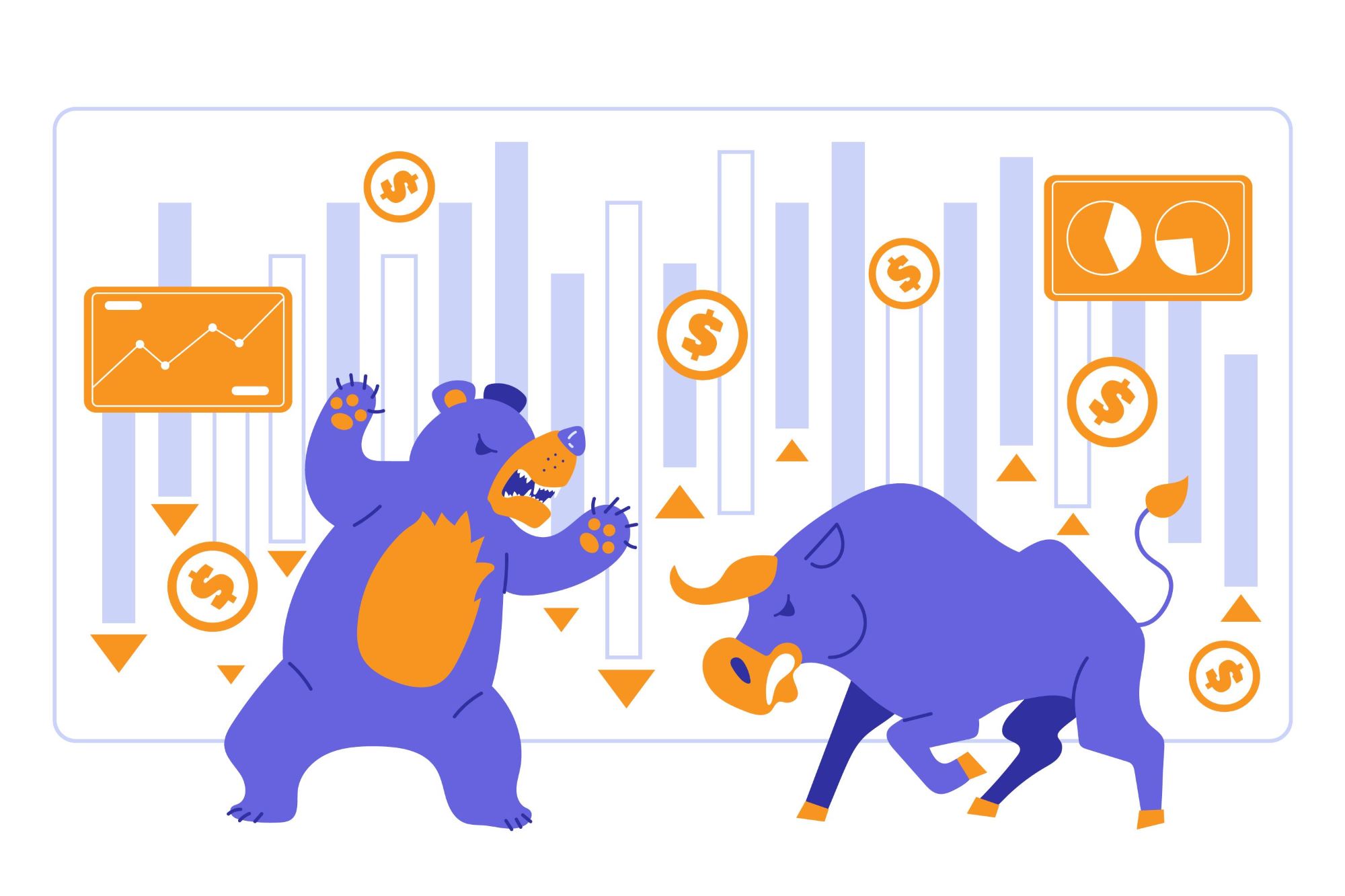Bullishness and bearishness refer to the market sentiment or outlook on the direction of currency prices in the forex market. When traders are bullish, they believe that currency prices will rise, leading to an increase in demand and higher prices. Conversely, when traders are bearish, they anticipate that currency prices will fall, resulting in selling pressure and lower prices. These sentiments are influenced by various factors, including economic indicators, geopolitical events, and central bank policies.
Definition of the Forex Market
In the vast landscape of global finance, the Forex market, short for foreign exchange market, stands as a bustling hub where currencies are traded around the clock. It serves as the primary arena for exchanging one currency for another, facilitating international trade and investment on a monumental scale. Unlike traditional stock exchanges, the Forex market operates decentralizedly, with transactions occurring electronically over-the-counter (OTC). This market’s sheer size, liquidity, and accessibility make it a cornerstone of the global financial system.
Forex trading involves speculating on the fluctuating values of different currencies relative to one another. Participants, ranging from individual retail traders to large financial institutions, aim to profit from these price movements by buying low and selling high, or vice versa. The Forex market’s dynamic nature, influenced by an array of factors including economic indicators, geopolitical events, and central bank policies, presents both opportunities and risks for traders. Understanding the fundamentals of Forex trading, including concepts like bullishness and bearishness, is essential for navigating this ever-evolving landscape and achieving success in the market.
Bullishness in the Forex Market
Bullishness in the Forex market refers to a positive sentiment or outlook towards a particular currency pair. When traders are bullish, they believe that the value of a currency will rise relative to another currency. This optimism often leads to an increase in buying activity, driving up the price of the currency.
Factors Influencing Bullishness:
- Economic Indicators: Strong economic data, such as high GDP growth or low unemployment rates, can fuel bullishness by indicating a healthy economy.
- Interest Rates: Higher interest rates in a country tend to attract foreign investment, boosting demand for its currency and driving up its value.
- Market Sentiment: Positive news, political stability, or optimism about future developments can contribute to bullish sentiment among traders.
Understanding these factors is crucial for traders to identify potential bullish trends and make informed trading decisions.
Bearishness in the Forex Market
Bearishness in the Forex market reflects a negative sentiment or outlook towards a currency pair. When traders are bearish, they anticipate a decline in the value of a currency relative to another currency. This pessimism often leads to increased selling activity, causing the price of the currency to fall.
Factors Influencing Bearishness:
- Economic Downturns: Weak economic data, such as low GDP growth or rising unemployment, can trigger bearish sentiment as investors worry about the health of the economy.
- Political Instability: Uncertainty or turmoil in a country’s political landscape can lead to bearishness as investors seek safer assets.
- Interest Rate Cuts: Lower interest rates can diminish the attractiveness of a currency, leading to a decline in its value as investors seek higher returns elsewhere.
Understanding these factors helps traders anticipate potential bearish trends and adjust their trading strategies accordingly.
Impact on Forex Trading
Understanding bullishness and bearishness is crucial for forex traders as it influences their trading decisions. Traders use technical analysis, fundamental analysis, and market sentiment indicators to gauge the prevailing sentiment and identify potential trading opportunities.
| Aspect | Bullish Sentiment | Bearish Sentiment |
| Economic Factors | Positive economic indicators fuel buying activity | Economic downturns trigger selling activity |
| Interest Rates | Higher rates attract investors, boosting demand | Lower rates diminish currency attractiveness |
| Market Sentiment | Positive news and stability drive up currency value | Political instability and uncertainty lead to selling |
- Trading Strategies
- Bullish Strategies: Traders adopt bullish strategies when they anticipate a rise in the value of a currency. This may include buying the currency pair or entering long positions.
- Bearish Strategies: Conversely, traders employ bearish strategies when they expect a decline in the value of a currency. This may involve selling the currency pair or entering short positions.
Understanding the impact of bullishness and bearishness allows traders to capitalize on market opportunities and manage risks effectively.
Risk Management
In the volatile world of forex trading, effective risk management is paramount to success. Risk management involves identifying potential risks and implementing strategies to mitigate them, safeguarding capital and maximizing returns.
Traders employ various risk management techniques to protect themselves against adverse market movements. One common strategy is setting stop-loss orders, which automatically close a position at a predetermined price level to limit potential losses. By defining the maximum amount they are willing to lose on a trade, traders can minimize the impact of unexpected market fluctuations.
Diversification is another key aspect of risk management. By spreading their investments across multiple currency pairs or asset classes, traders can reduce their exposure to any single risk factor. This helps to mitigate the impact of adverse events in one market on the overall portfolio, ensuring more stable returns over time.
Future Perspectives
As the Forex market continues to evolve and adapt to changing global dynamics, several key trends and developments shape its future outlook. Here are some future perspectives to consider:
- Technological Advancements
- Implementation of artificial intelligence and machine learning algorithms for automated trading.
- Integration of blockchain technology for transparent and secure transactions.
- Development of advanced trading platforms with enhanced analytical tools and real-time data feeds.
- Regulatory Changes
- Adoption of stricter regulations to ensure market integrity and investor protection.
- Introduction of regulatory frameworks for emerging technologies like cryptocurrency trading.
- Collaboration among regulatory bodies worldwide to harmonize regulatory standards and promote market stability.
- Global Economic Trends
- Impact of geopolitical tensions and trade disputes on currency markets.
- Influence of macroeconomic factors such as inflation rates, GDP growth, and employment figures on currency valuations.
- Shifts in global economic power dynamics and their implications for currency exchange rates.
- Market Innovation
- Introduction of new financial instruments and derivatives to hedge currency risk.
- Emergence of alternative trading platforms and decentralized exchanges.
- Innovation in risk management strategies to address evolving market complexities.
- Changing Market Dynamics
- Rise of emerging market currencies as key players in the global Forex market.
- Increasing participation of retail traders through online trading platforms and mobile apps.
- Evolution of trading strategies and techniques in response to market trends and developments.
As traders and investors navigate the complexities of the Forex market, staying abreast of these future perspectives can provide valuable insights and guide strategic decision-making in pursuit of long-term success.




